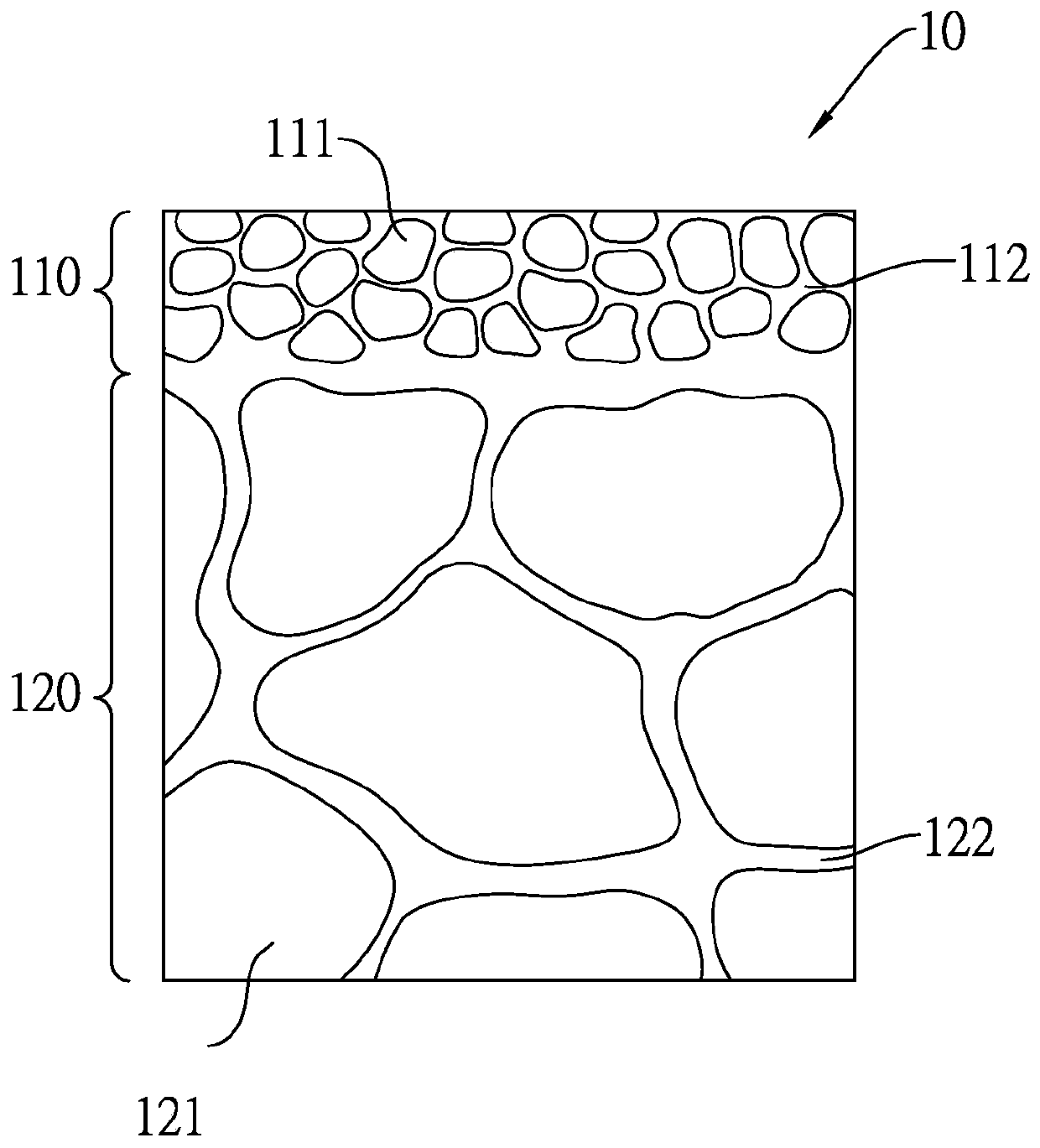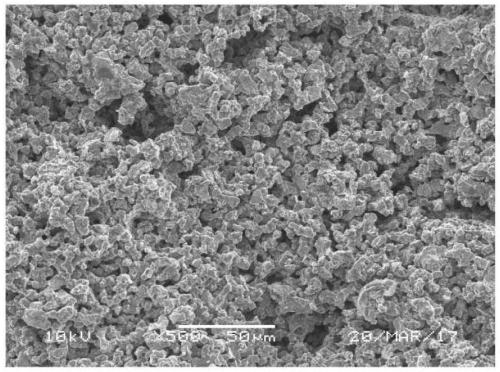A porous ceramic plate as well as a preparation method and application thereof
A technology of porous ceramics and porous ceramic plates, applied in the field of porous ceramic plates, which can solve the problems of high production cost, cumbersome preparation procedures, differences in air resistance between the adsorption layer and the support layer, etc., and achieve uniform air permeability, simplified preparation procedures, and uniform distribution of pores Effect
- Summary
- Abstract
- Description
- Claims
- Application Information
AI Technical Summary
Problems solved by technology
Method used
Image
Examples
Embodiment 1
[0053] The preparation method of the porous ceramic plate of embodiment 1
[0054]First, the surface ceramic raw material and the bottom ceramic raw material are prepared: the surface ceramic raw material contains methyl cellulose as a thickener, and metal oxides of iron oxide, manganese oxide, and chromium oxide, and iron oxide occupies the surface ceramic The total weight of the raw materials is 30% by weight, and the manganese oxide accounts for 40% by weight of the total weight of the surface ceramic raw materials; the particle size of the metal oxide in the surface ceramic raw materials is between 0.3 μm and 1.5 μm, and the average particle size is 0.5 μm; The bottom ceramic raw material contains methyl cellulose as a thickener, and metal oxides of iron oxide, manganese oxide, and chromium oxide, and the iron oxide accounts for 30% by weight of the bottom ceramic raw material, and the manganese oxide accounts for 30% by weight of the bottom ceramic raw material. 40% by we...
Embodiment 2
[0062] The preparation method of the porous ceramic plate of embodiment 2
[0063] The preparation method of Example 2 is similar to the steps of the preparation method of Example 1, the difference being that the bottom ceramic raw material is added with PMMA balls as a pore-forming filler, which accounts for 7% by weight of the bottom ceramic raw material. Because the bottom ceramic raw material is added with a pore-forming filler, after sintering, the bottom ceramic layer of the double-layer porous ceramic slab, in addition to the original pores formed after the ceramic raw materials are stacked and sintered, also has relatively large pores formed by the loss of the pore-forming agent. Large pores not only increase the average pore size of the underlying ceramic layer, but also greatly increase the porosity of the underlying ceramic layer and reduce air resistance. The double-layer porous pottery plate of embodiment 2, the average pore diameter of its top layer ceramic layer...
Embodiment 3
[0064] The preparation method of the porous ceramic plate of embodiment 3
[0065] The preparation method of Example 3 is similar to the steps of the preparation method of Example 1, and the difference is that the selected surface ceramic raw materials and bottom ceramic raw materials or contents are different in Example 1 and Example 3. The surface ceramic raw material comprises methyl cellulose as a thickener, and metal oxides of iron oxide, manganese oxide, and chromium oxide, and the iron oxide accounts for 30% by weight of the surface ceramic raw material, and the manganese oxide It accounts for 40% by weight of the total weight of the surface ceramic raw material; the particle diameter of the metal oxide in the surface ceramic raw material is between 3 μm and 15 μm, and the average particle diameter is 8 μm. The bottom ceramic raw material is similar to the surface ceramic raw material, the only difference being that the bottom ceramic material is added with PMMA balls a...
PUM
| Property | Measurement | Unit |
|---|---|---|
| particle size | aaaaa | aaaaa |
| pore size | aaaaa | aaaaa |
| pore size | aaaaa | aaaaa |
Abstract
Description
Claims
Application Information
 Login to View More
Login to View More - R&D
- Intellectual Property
- Life Sciences
- Materials
- Tech Scout
- Unparalleled Data Quality
- Higher Quality Content
- 60% Fewer Hallucinations
Browse by: Latest US Patents, China's latest patents, Technical Efficacy Thesaurus, Application Domain, Technology Topic, Popular Technical Reports.
© 2025 PatSnap. All rights reserved.Legal|Privacy policy|Modern Slavery Act Transparency Statement|Sitemap|About US| Contact US: help@patsnap.com



